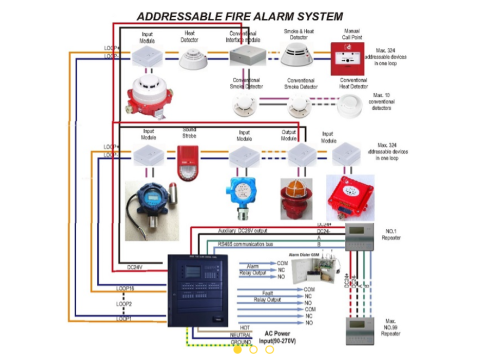Developing Specifications for Security and Fire Alarm Systems
Creating effective technical specifications (TS) for security and fire alarm systems is essential for designing reliable and compliant safety solutions. This guide focuses on practical steps and best practices for drafting specifications, ensuring both system functionality and regulatory compliance.
Why Are Specifications Important?
Specifications define the framework for system design and installation, including:
- The scope and components of the system.
- Placement of sensors and control devices.
- Performance requirements of technical equipment.
For fire and security systems, the quality of the specifications directly impacts installation efficiency, system reliability, and long-term maintenance.
Fire Alarm System Specifications
Fire alarm system design requires compliance with building and fire safety codes. Key steps include:
- Site Plans: Provide detailed floor plans with structural specifics (beams, ventilation openings, etc.).
- System Type: Specify whether the system will be threshold-based, addressable, or wireless.
- Equipment Details: List preferred brands or models if necessary (e.g., "Based on the XYZ Integrated Security System").
- Integration with Other Systems: Include requirements for ventilation or access control systems that need to interface with the alarm.
Pro Tip: Avoid overly complex technical instructions in the TS. Instead, reference standards like:
"All design and installation work must comply with NFPA 72: National Fire Alarm and Signaling Code."
This ensures professional installers understand and adhere to industry-standard practices without unnecessary confusion.
Security Alarm System Specifications
The approach for security systems is slightly more flexible, as they are less constrained by strict installation codes. Essential elements to include:
- Type of Security: Define whether the system is:
- Autonomous: Operates independently.
- Monitored: Connected to a central monitoring station.
- Levels of Protection: Specify the number of protection layers and vulnerable points (e.g., doors, windows, perimeter).
- Power Backup: Describe requirements for uninterrupted power supply.
- Signal Transmission: Outline how alerts are sent (e.g., GSM, IP-based, or radio).
For monitored systems, collaboration with the monitoring service provider is critical to ensure compatibility and compliance with their requirements.
Challenges and Best Practices
- Lack of Expertise: Many organizations lack in-house experts for drafting specifications. Collaborate with your installer or security provider to ensure a thorough and practical TS.
- Cost and Oversimplification: Balancing affordability with system reliability is essential. Avoid cutting corners that compromise safety.
- Compliance Requirements: For larger projects, align specifications with local regulations and seek approval from relevant authorities.
Pro Tip: A well-crafted TS prevents miscommunication and helps avoid costly redesigns or installation delays.
Conclusion
Whether you're designing a fire alarm system for regulatory compliance or a security system to protect your property, creating clear and comprehensive specifications is a critical step. For expert advice and tailored solutions, visit safsale.com and explore reliable systems that fit your needs!

